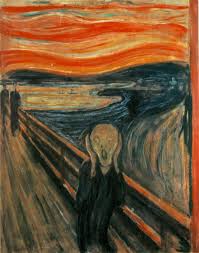This is a brief explanation about what this awareness initiative is about and, following that, my own evidence-based evolutionary and social perspective on it.
The Mental Health Awareness Month was established and has been observed since 1949. An initiative of the National Association for Mental Health, the objective is to concentrate efforts to educated the public concerning:
– What is mental illness and what are the most prevalent ones
– Environmental conditions that may trigger, cause or exacerbate mental illness
– Confront the stigma associated with mental illness
Find links about it below.
Mental illness is only stigmatized or even diagnosed through behavior. The individual manifests some behavior that deviates from what is socially (and clinically) accepted as healthy or normal. Either he is aware of it (because it causes suffering) or he is forcibly diagnosed (by family, in prison, etc).
In fact, mental illness is the set of behaviors that, in a continuum, call our attention to its dysfunctional nature. However, it is a continuum. Somewhere in this continuum it is acceptable and even beneficial. The point from which a behavior ceases to be beneficial and becomes dysfunctional and considered pathological is not a clear line.
Several mental conditions are considered beneficial if “light”, such as “light” OCD behavior.
In evolutionary terms, that means that those individuals genetically predisposed to that behavior were repeatedly selected and selectively reproduced more than others, so that the genes are still here with us.
Some behaviors only became pathological as they clashed against socially accepted norms.
Even the data on mental illness prevalence is dubious. It is considered that around 20% of the population has one of the most commonly diagnosed mental illnesses: depression, bipolar disorder and schizophrenia. How do we know that? Because at some point they end up in public records. The problem is that the majority of people with mental illness, or mental conditions that make their behavior dysfunctional, are never diagnosed.
More later.
For now:
– Most dysfunctional behavior hurts nobody except the person who manifests it
– There is a higher frequency of people with certain mental illnesses among segments of society that produce art, science, technology and all the good things in human culture
– Mental illness is exacerbated and may become lethal as a response to prejudice, moralism, religious fundamentalism, parental abuse and cult/gang organization
https://en.wikipedia.org/wiki/Mental_Health_Awareness_Month
https://www.mentalhealth.org.uk/statistics
https://www.nami.org/mentalhealthmonth
https://www.nami.org/learn-more/mental-health-by-the-numbers

